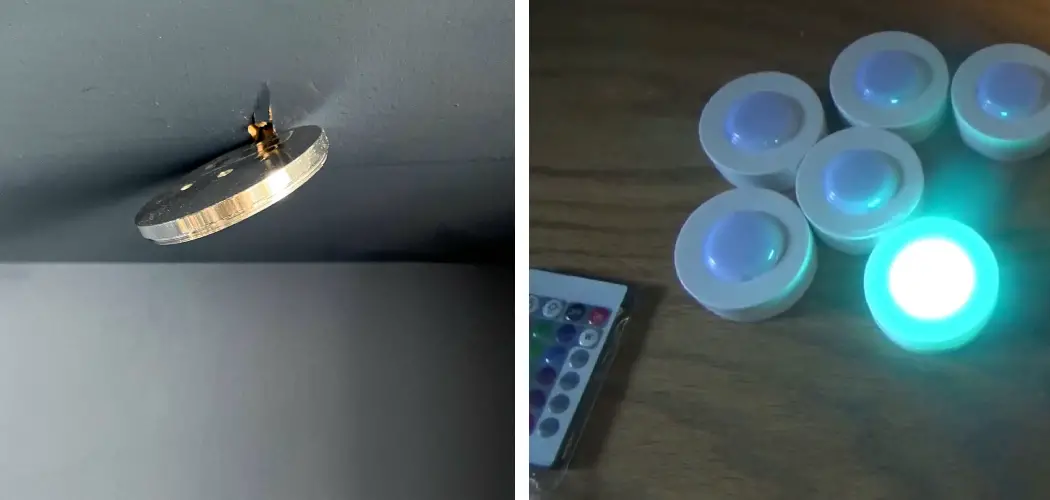Puck lights, an innovative lighting solution, have surged in popularity for their versatility and sleek design in home illumination. Their compact size and simplicity make them an attractive option for various lighting needs, from under-cabinet lighting in the kitchen to accent lighting in the living room.
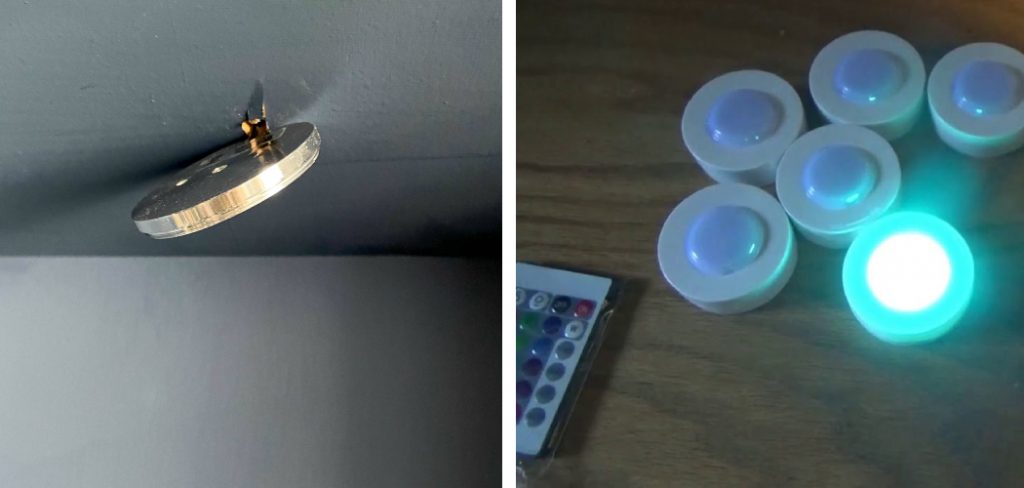
These lights offer various benefits, including energy efficiency, ease of installation, and the flexibility to enhance any space aesthetically. Puck lights typically consist of an LED chip encased in a housing with a diffuser, powered by batteries or connected to electricity, and are operated with a switch or remote control.
The essence of how do puck lights work lies in their ability to provide focused, ambient lighting while being discreet and unobtrusive. This article aims to elucidate puck lights’ operation, installation, and applications, enabling you to illuminate your space with confidence and flair.
Whether you are renovating your home or just looking to add a touch of light to your décor, understanding puck lights’ functionality and customization options is vital. We will delve into components, power options, installation tips, safety precautions, troubleshooting, and innovative uses, equipping you with the knowledge to brighten your environments effectively.
Demystifying the Terminology
Understanding key terms is crucial in selecting the right puck lights for your space. Lumens measure the total amount of visible light emitted by a source, indicating its brightness. Lux, on the other hand, measures the intensity of light that hits a surface, important for gauging how much light you need in a specific area.
The color temperature of a light source is given in Kelvins and describes the warmth or coolness of the light appearance, ranging from warm white to cool blue tones. CRI, or Color Rendering Index, indicates how accurately the light source reveals the true colors of objects compared to natural light.
Puck lights tend to be more discrete and focused in their illumination compared to broader under-cabinet strips or general ambient light from recessed lighting.
Smart puck lights encompass additional features such as WiFi connectivity, allowing for control via smartphone apps or integration with smart home ecosystems for voice control and scheduling.
Inside the Puck: Exploring the Components
At the heart of every puck light lies its main components: The LED chip, the driver circuit, the heat sink, the diffuser, and the housing. The LED chip is the central element that emits light when an electrical current passes through it. This semiconductor device is essential for converting electricity into visible light and can come in different types to affect color temperature and brightness.
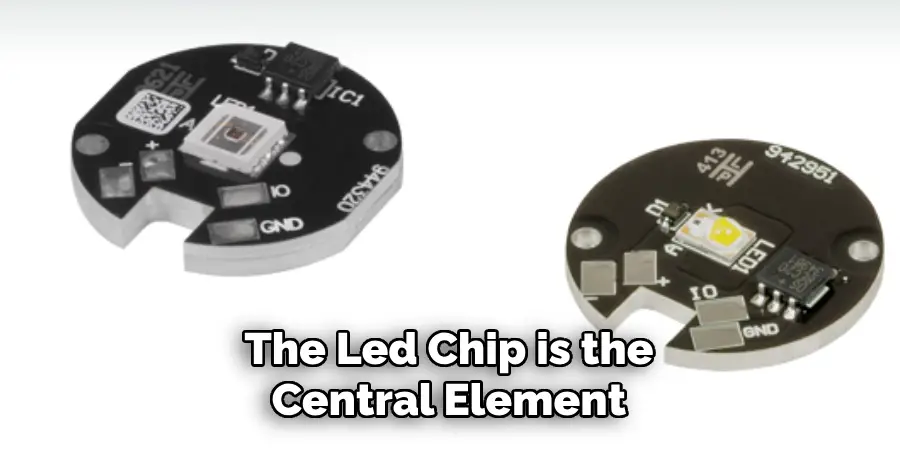
The driver circuit is the brain of the puck light, regulating the power to the LED chip to ensure it operates efficiently and safely, providing a steady current even when the voltage supply fluctuates.
Thermal management is critical in LED technology, and this is where the heat sink comes in. It dissipates the heat generated by the LED chip, protecting the components and extending the light’s lifespan. A good heat sink is vital for maintaining performance over time.
The diffuser, usually made of a translucent material like frosted glass or plastic, plays a key role in shaping the light that is emitted. It spreads the light evenly across a surface, reducing glare and creating a soft, pleasant glow. This component contributes significantly to the aesthetic quality of the lighting.
Lastly, the housing encases all these components, providing protection and lending to the overall design of the puck light. It can be made of various materials, from plastic to metal, influencing the light’s durability and appearance. Different types of housings can also affect the ease of installation and the suitability of light for various environments.
Each piece of this carefully constructed puzzle contributes to the reliability, efficiency, and quality of light that puck lights are known for, emphasizing the importance of understanding how do puck lights work in creating the desired lighting effect in your space.
Powering Up: Understanding the Options
Puck lights deliver their convenient illumination through various power options, tailoring to user preference and the specific application.
Battery-powered puck lights are the epitome of easy installation and mobility, allowing relocation without concern for power outlets. Ideal for quick enhancements in spaces like closets, they do, however, require regular battery replacements, which could be a downside for those seeking a set-and-forget solution.
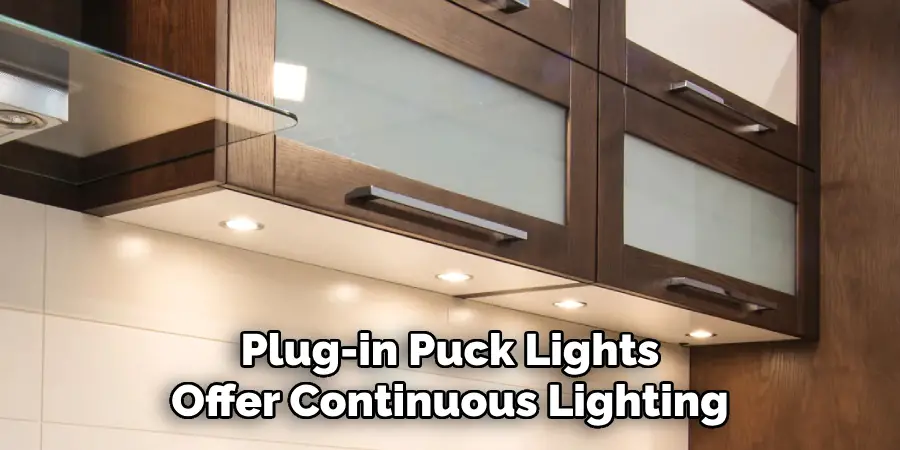
In contrast, plug-in puck lights offer continuous lighting without needing battery changes, though they are limited by the need to be near an electrical outlet. This makes them suitable for areas like kitchen counters where a power source is usually within reach.
A seamless and permanent solution is found in hardwired puck lights, which, while requiring professional installation, provide a clean look with no visible wires and are optimal for new constructions or major renovations.
Control options such as simple on/off switches, dimmers, and even remote controls open up a suite of functionalities, elevating the user experience. Dimmers allow for adjustable lighting to set the mood or conserve energy, while remote controls bring comfort in adjusting lighting from afar.
Each power and control option presents a distinctive set of advantages that cater to varying needs, ensuring there is a puck-light solution suitable for every application.
Installation Made Easy: A Step-by-Step Guide
Installing puck lights can be a straightforward task. Here’s how you can set up both battery-powered and plug-in models:
1. Battery-Powered Puck Lights
- Choose the Location: Identify where you want the puck lights to go. Ensure the surface is clean and dry before installation.
- Mark the Spot: Using a pencil, lightly mark the spot where each puck light will be installed.
- Attach the Mount: Peel the adhesive backing from the mount or apply the double-sided tape to the back of your puck light.
- Secure the Light: Firmly press the puck light into position for about 30 seconds to ensure a strong bond.
- Install Batteries: If the batteries are not already installed, insert them according to the manufacturer’s instructions.
- Test: Turn on the puck lights to ensure they work properly and provide the desired lighting effect.
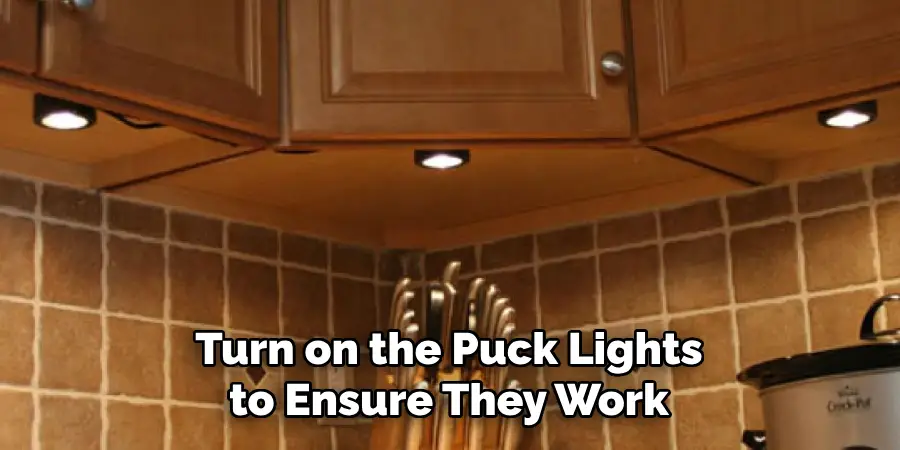
2. Plug-In Puck Lights
- Choose the Location: Determine where the puck lights will be placed and the nearest outlet.
- Prepare the Area: Clean the surface and ensure there’s an outlet within cord reach of the lights.
- Install Mounting Hardware: Depending on the product, you may need to screw in mounting brackets or use adhesive pads to secure the lights.
- Place Puck Lights: Attach the lights to the mounting hardware or adhere them directly to the desired surface.
- Connect to Power: Plug the light’s cord into the power adapter and then into the electrical outlet.
- Organize Cables: Use cable clips or other organizational tools to manage cords and keep them out of sight.
3. Hardwired Puck Lights
For hardwired puck lights, the installation process generally includes electrical work that should be done by a certified electrician to ensure safety and compliance with local codes. This process often involves:
- Running electrical wiring directly from your home’s power supply to the location of the puck lights.
- Installing a switch to control the lights or wiring them to an existing switch.
- Mount the lights in the desired location and connect them to the newly run wires.
Given the complexity and potential hazards associated with handling electrical systems, always enlist professional help for installing hardwired puck lights.
Customization Corner: Choosing the Right Puck Light
Selecting the perfect puck light requires considering your specific lighting needs and preferences. Start by evaluating the lumen output, which measures brightness; a higher lumen means a brighter light.
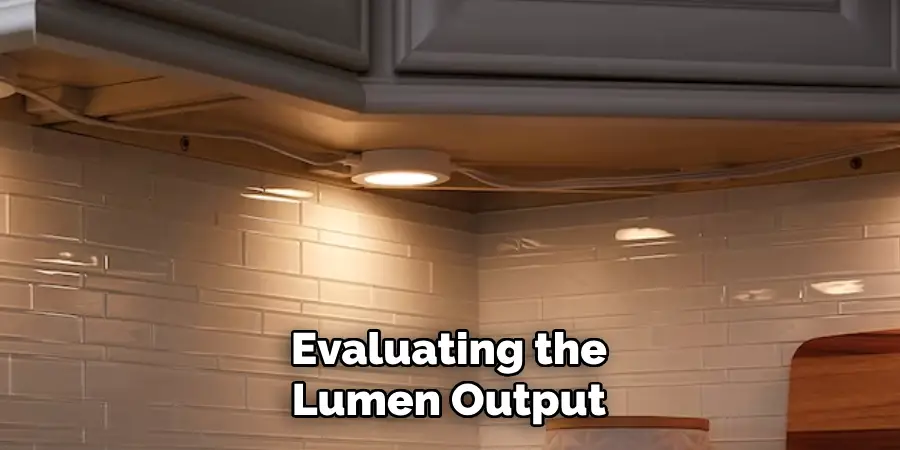
The color temperature is also crucial—choose a warm white (2700K-3000K) for a cozy, inviting atmosphere or a cool white (3500K-4100K) for a more alert, task-oriented environment. For versatility, some puck lights offer adjustable color temperatures.
Advanced features can substantially enhance functionality. Look for dimmability if you want to control the intensity, whether to create mood lighting or to reduce eye strain. Motion sensors are excellent for areas like pantries where hands-free operation is beneficial. Additionally, color-changing capabilities allow for a vibrant range of hues suitable for thematic occasions or accent lighting.
As for brands, options abound. Philips Hue offers smart puck lights with extensive color change and app control features. Puck Lighting brand is known for its quality and range, providing products that cater to various applications.
Lithonia Lighting is another name that stands out for durable and sleek designs. Investigate the product lines and reviews to find a match for your domestic or commercial needs, considering the balance between cost, features, and quality.
Beyond Basic Illumination: Enhancing Your Space with Puck Lights
When considering the addition of puck lights to your space, it’s essential to think about how these fixtures will complement and enhance your environment. Begin by assessing the intended use case. Are you looking for task lighting beneath kitchen cabinets, aesthetic accent lighting for shelves, or security-oriented illumination for dark hallways? Your use case will directly influence the type and placement of puck lights you choose.
Next, contemplate the aesthetics of your space. The design and finish of the puck lights should harmonize with your room’s color scheme and style. Sleek, metallic finishes might suit modern decors, while traditional or rustic spaces could benefit from warmer tones and textures.
When it comes to functionality, adjustable features are highly beneficial. Puck lights with rotatable angles offer precision in directing light, allowing you to highlight specific areas or objects. Moreover, for multi-purpose rooms, color temperature adjustability facilitates the transition from a productive work environment to a relaxed ambiance at the flick of a switch or tap on a smartphone.
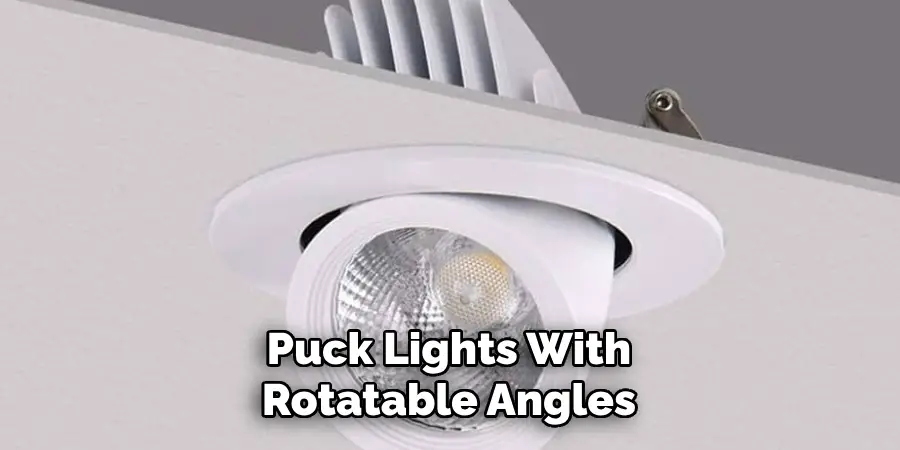
Considering compatibility with smart home systems can also offer a new level of convenience. Brands such as Philips Hue integrate seamlessly with apps and voice assistants, providing an elevated, hands-free control experience. On the other hand, brands like Lithonia Lighting focus on robustness and efficiency, offering long-lasting solutions that cater to pragmatic needs.
Ultimately, the right puck light setup can uniquely address both functional necessities and aesthetic desires, creating an environment that’s not only well-lit but also tailored to your lifestyle and preferences.
Troubleshooting Common Issues
When dealing with puck lights, some common issues that may arise include flickering, dimming, or lights not turning on. Flickering can be caused by loose connections or incompatible dimmer switches. To address this, ensure that all connections are tight and secure, and check if your dimmer is compatible with your puck lights according to the manufacturer’s specifications.
Dimming issues are often a result of drained or weak batteries in battery-operated models. Replace the batteries with new ones, and if the problem persists, inspect the battery contacts for any corrosion and clean them as necessary.
In cases where puck lights do not turn on, first, Check whether the power source is working by testing other devices in the same outlet. For hardwired installations, ensure that the circuit breaker is not tripped. If you use a remote control or wireless switch, verify that they are properly paired with the lights.
Should these steps not resolve your issue, bulbs may have reached the end of their lifespan and need replacement. For LED variants, this is rare, but it can happen. For persistent or more complex problems, especially with hardwired puck lights, consulting a certified electrician is highly recommended to ensure safety and a proper resolution.
The Future of Puck Lights: Smart Homes and Beyond
The evolution of lighting technology has paved the way for an exciting era where smart puck lights are not just accessories but integral parts of smart home systems.

The convenience of voice control through assistants like Amazon Alexa and Google Assistant means that users can adjust lighting without lifting a finger, perfect for managing ambiance hands-free. Scheduled lighting allows for the automation of daily routines, turning lights on or off at specific times, thus contributing to energy efficiency and security.
Remote access through apps on smartphones or tablets provides the flexibility to control lighting even when away from home, ensuring a welcoming environment upon return home.
The addition of color-changing capabilities introduces a new level of customization for homeowners. With options to change hues for occasions and moods or even sync with music, puck lights become an interactive element of the home’s decor.
Emerging technologies in puck lighting, like tunable white light panels, offer the ability to adjust color temperatures – from warm to cool white – adapting to various tasks or times of the day. This feature is beneficial for aesthetic flexibility and health, as it can align with our natural circadian rhythms.
As these technologies continue to integrate with broader smart home ecosystems, puck lights will undoubtedly play a significant role in the future of automated and personalized home lighting solutions.
DIY vs. Professional Installation: Making the Right Choice
For the handy DIY enthusiasts, installing puck lights can be a manageable project with the right tools and some basic knowledge of electrical systems. The benefits of DIY installation include cost savings and a sense of accomplishment. However, it’s important to honestly assess one’s comfort level and proficiency with electrical tasks before beginning. Safety is paramount, and even a small oversight can lead to electrical hazards.
On the other hand, a professional electrician brings expertise, ensuring installations comply with building codes and are executed safely and efficiently. While this option incurs higher upfront costs, it mitigates risks and saves time.

Regardless of the route chosen, it is essential to prioritize electrical safety, follow manufacturer instructions, and adhere to local building codes. If in doubt, or if the project involves extensive wiring or integration into the home’s main electrical system, hiring a professional is advisable.
Sustainability and Environmental Impact
LED puck lights are a step forward in sustainable lighting, consuming up to 80% less energy than traditional incandescent bulbs. This significant reduction in energy usage translates to lower electricity bills and a diminished carbon footprint, making them an environmentally friendly choice for the conscious consumer.
Notably, LED lights have a long lifespan, reducing the frequency of replacements and, consequently, waste.
However, producing LEDs involves rare earth elements and can result in electronic waste when disposed of improperly. To mitigate this impact, opting for LED puck lights certified with an eco-friendly seal or label ensures adherence to environmental standards.
When it comes time to dispose of LED lights, recycling programs for e-waste are vital, as they facilitate the proper handling of materials and help prevent harmful substances from entering landfills. By choosing sustainable options and engaging in responsible disposal, consumers contribute positively to environmental conservation.
Frequently Asked Questions for How Do Puck Lights Work
Q: Can Puck Lights Be Used in Damp or Wet Environments?
A: While some puck lights are designed to be moisture resistant, always check the manufacturer’s specifications to ensure they are rated for use in damp or wet environments, such as bathrooms or outdoors.
Q: How Do I Replace the LED in A Puck Light?
A: Due to their integrated design, most LED puck lights do not have replaceable bulbs. When the LEDs no longer function, the entire unit is typically replaced. Always refer to the manufacturer’s guidelines for specific instructions.
Q: Are Puck Lights Energy Efficient?
A: Yes, puck lights that use LED technology are highly energy-efficient and can save up to 80% in energy compared to traditional lighting options.
Q: Can I Install Puck Lights Under Cabinets without Drilling Holes?
A: Yes, many puck lights, especially battery-operated units, come with adhesive backing or magnetic mounts that allow for installation without drilling. However, for more permanent and secure placement, screws may be required.
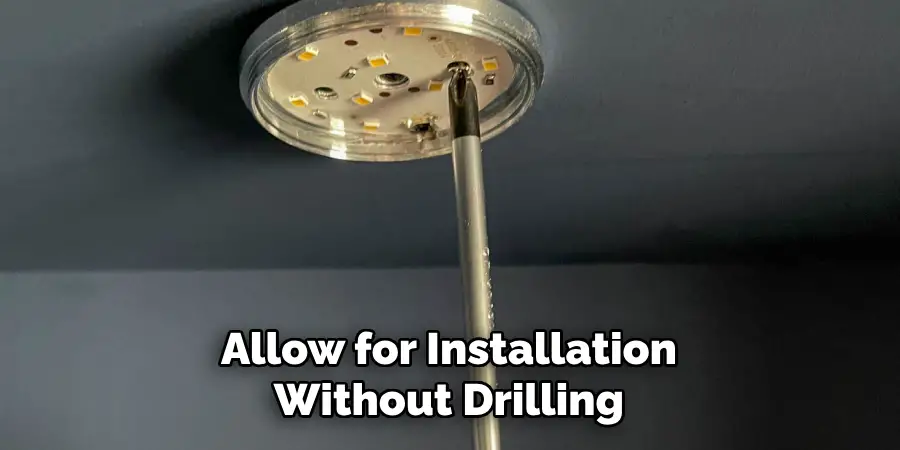
Q: How Do I Ensure My Puck Lights Are Evenly Spaced During Installation?
A: Use a measuring tape to determine the length of the area where you wish to install the lights. Divide that length by the number of lights to find the spacing between each one. Mark these points as a guide for installation.
Conclusion: Puck Lights – A Versatile Lighting Solution
Puck lights emerge as the epitome of versatility in the realm of lighting, infiltrating an assortment of applications with ease and dexterity. Their discreet size and remarkable adaptability allow for creativity in how do puck lights work—whether accentuating artifacts, crafting cozy patios, or integrating into smart homes.
As this guide illuminates the vast potential of these nifty fixtures, we encourage you to explore and unleash your inventive prowess with puck lights. May this article empower you with the knowledge and confidence to harness their full spectrum of possibilities for a well-lit and inspired living space.

